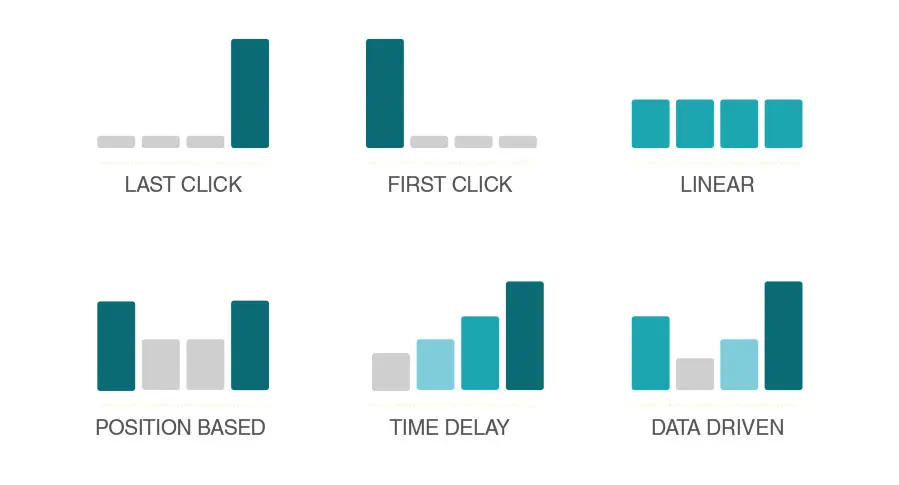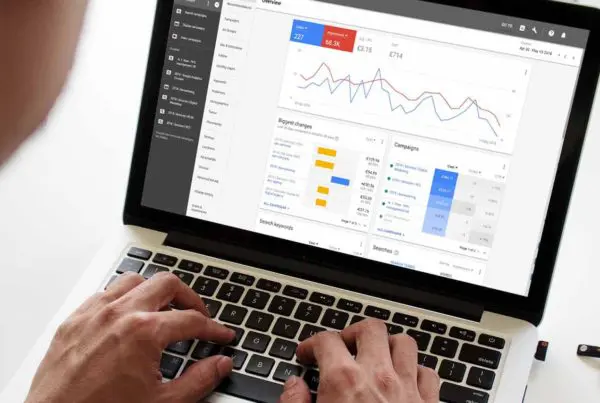Choosing the correct Google Ads attribution model is highly important for your advertising strategy. It helps delve deeper into precisely what form of ad led to a click. With Google Ads spanning several platforms, prospective customers can see your ad several times before purchasing your products. In fact, it generally takes 7 to 13+ touch points or engagements for your business to turn a lead into a convert.
Google Ads attribution models – as the name implies – are all about attribution: which channel or keyword deserves credit for the sale/conversion? We may say, “Oh, the YouTube ad converted them”. But did it? And should we assume the last click a customer makes – the click before the purchase – is truly the click that led to the conversion and not a dozen engagements prior?
In this article, I’ll be exploring the six Google Ads attribution models, what they do, and what kind of business is best suited to each. Let’s get started.
Six Types of Google Ads Attribution Models
Last Click Attribution (Default)
Last click attribution is the default attribution model used in Google Ads; it gives all credit to the last interaction or click, leading to a conversion.
It makes sense, right? After all, the click that preceded the sale surely had the greatest impact: it sparked the conversion. Except, that’s not always true. Often, consumers take longer to consider their options for bigger, more expensive products or services, seeing a company multiple times before committing.
Last click attribution, therefore, is best suited to industries with a very short buying cycle, e.g., emergency plumbers. Because of the same-day conversion window, generally dominated by 1-click conversions, the last-click attribution model captures an accurate picture of what sparked the conversion.
For example: if a consumer finds your website via organic search. Then, they see your ad on a search or social media platform the next day, and they click to purchase your product. The last click is genuinely responsible for the conversion.
First Click Attribution
First click attribution is the inverse of the last click model. Here, all credit is given to the first click preceding a conversion or sale.
For example: say a consumer sees your ad, clicks, but decides not to buy today. Then, later, they see your ad again and choose to purchase this time. The first click is emphasised.
Businesses using first-click attribution tend to be growth-orientated; it’s about building brand awareness and top of the funnel engagement. Why? Because the first click tells you what captures initial engagement with your brand: keywords, compelling call to action, and well-targeted audience.
The downside is that most people who had a first click never went on to purchase your product.
Linear Attribution
Linear attribution is sort of like the “Goldilocks option”; it doesn’t give credit to any particular click but distributes all the credit equally across all ad interactions prior to a conversion.
For example: A prospective customer sees your ad on Instagram, YouTube, and twice on Google Search before purchasing your product. Here, the credit is attributed to all the steps.
Considered a conservative strategy, it’s most appropriate for when Google Ads comprises the majority of your traffic, and your organic footprint is very small. When solely (or mostly) using Google Ads, you can correctly appraise the totality of your ad strategy, but when using other platforms, linear attribution ignores other potentially instrumental engagements.
Position-Based Attribution
Position-based attribution gives 40% of the credit to the first and last engagement (80% in total); the final 20% is divided between the remaining clicks. Such an approach makes the most intrinsic sense for many businesses: you can see how people found you and when they converted. Everything else is superfluous.
While not as growth-orientated as a pure first-click approach, position-based attribution balances building brand awareness with delivering real sales. Nor does it ignore the brief interactions that contributed to the final conversion.
This structure is likely to mirror a consumer’s actual experience with a brand compared to other Google Ads attribution models.
Time Decay Attribution
Time decay attribution is similar to the linear attribution model, except that the closer a click is to the final conversion, the greater credit it is given.
Such a Google Ads attribution model is tailored towards products or services with a long buying cycle. Consumers typically are aware of the brand before seeing the ads, and such businesses can expect conservative growth compared to a first-click model.
For example: if a consumer experiences seven engagements with your brand across several months, the final few engagements would be increasingly important compared to the rest. Such a long tail of attribution is therefore not suited for business with a rapid buying cycle.
Data-Driven Attribution
Finally, we have a data-driven approach, using “data from your account to determine which keywords, ads, and campaigns have the greatest impact on your business goals. Data-driven attribution looks at website, store visit, and Google Analytics conversions from Search (including Shopping), YouTube, and Display ads.”
Data-driven attribution relies on… data. Suppose you’ve got 3,000+ monthly clicks and 300+ conversions. In that case, you’ve got sufficient data to reliably mine for actionable analytics. That’s not the case for smaller businesses without significant online engagement.
For those who meet these metrics, it’s probably the most accurate Google Ads attribution model. The complex algorithm isn’t a blanket approach and helps advertisers optimise their bidding based on specific performance data.
For example: Say you’re a mechanic in Greenwich, London. Customers who click “mechanic London” ad first and then later click “mechanic car repair Greenwich” are more likely to use your services than a customer who solely clicked on “mechanic car repair Greenwich”. The model accounts for this, distributing the credit accordingly.
Use the Right Google Ads Attribution Model for Your Business
Selecting the right Google Ads attribution model means thinking about your business. Do you want rapid growth? How fast is your buying cycle? How many clicks and conversions do you see monthly? Answer these questions to determine which Google Ads attribution model is right for you.
- How to Do Keyword Research for Google Ads - January 15, 2024
- A Comprehensive Guide to Google Ads for B2C Businesses - January 8, 2024
- How to Write Calls to Action (CTAs) for Google Ads - December 25, 2023








